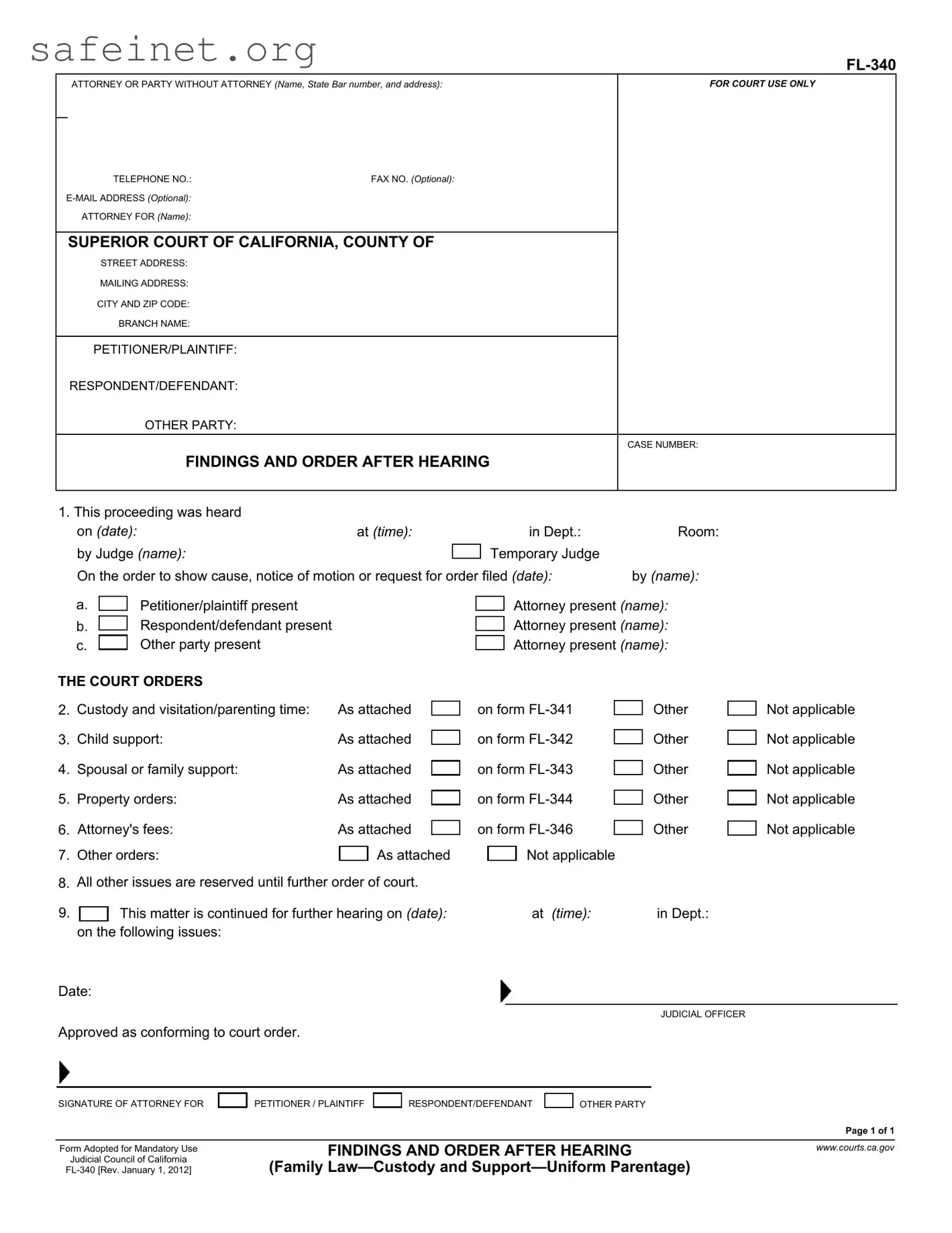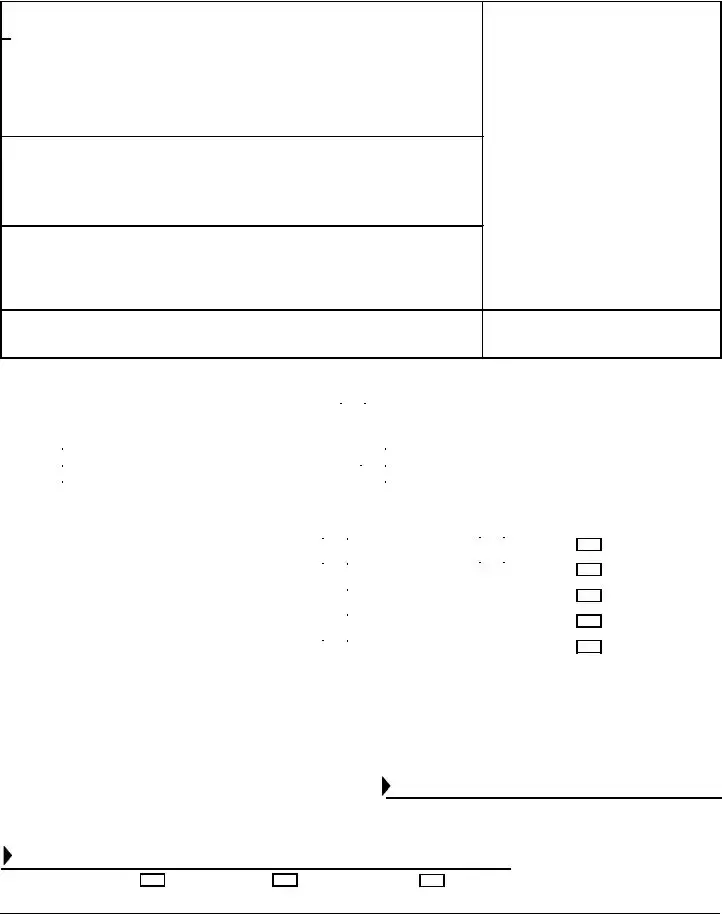What is the FL-340 form used for?
The FL-340 form, also known as the Findings and Order After Hearing, is used in California family law cases. It summarizes the court's decisions regarding custody, visitation, child support, spousal support, property orders, and other issues that arise during a family law hearing. This form is crucial for documenting the court's orders and ensuring that all parties are aware of their responsibilities.
Who can fill out the FL-340 form?
The form can be completed by attorneys representing any party involved in the case or by the parties themselves if they are not represented by legal counsel. When filling out the form, it is important to include accurate information, including the names of all parties involved and the case number. Ensuring that the form is filled out correctly helps to avoid delays in court proceedings.
What information is required on the FL-340 form?
The form requires various details, including the names and contact information of the attorney or party submitting the form, the court's address, the names of the petitioner/plaintiff and respondent/defendant, and the findings made by the judge. Specific sections of the form address custody arrangements, child and spousal support, property orders, and any additional issues that the court may address.
How does the court use the FL-340 form?
The court uses the FL-340 form to document its findings and orders after a hearing. It serves as an official record that outlines the judge's decisions and the reasons behind them. This documentation is essential for future reference, especially if disputes arise regarding the orders made. The court may also use the form to set dates for future hearings, as indicated in the form.
Is there a deadline for submitting the FL-340 form?
While specific deadlines may vary depending on individual cases, the FL-340 form should generally be submitted as soon as possible after a hearing. Prompt submission ensures that the orders are put into effect and provides clarity for all parties involved. It is advisable to check with the court or consult an attorney if there are uncertainties regarding deadlines.
What if I disagree with the orders stated on the FL-340 form?
If there is disagreement with the orders outlined on the FL-340 form, the affected party may seek to modify those orders by filing a motion with the court. It is recommended to consult with a qualified attorney to understand the appropriate steps to take. It is critical to act in a timely manner, as there are legal timelines within which motions must be filed.
Are there any attachments required with the FL-340 form?
Yes, the FL-340 form often requires attachments, such as FL-341 for custody and visitation orders, FL-342 for spousal support, FL-343 for property orders, and other relevant forms depending on the issues that were heard. These attachments provide detailed information that supports the court's findings and orders. Parties should ensure that all necessary attachments are included for the form to be deemed complete.
Where can I obtain the FL-340 form?
The FL-340 form can be obtained from various sources, including the official website of the California courts, local family law courthouses, or legal aid organizations. It is important to ensure that the version used is current, as forms can be updated or revised over time. Always check for the most recent version to avoid complications.

